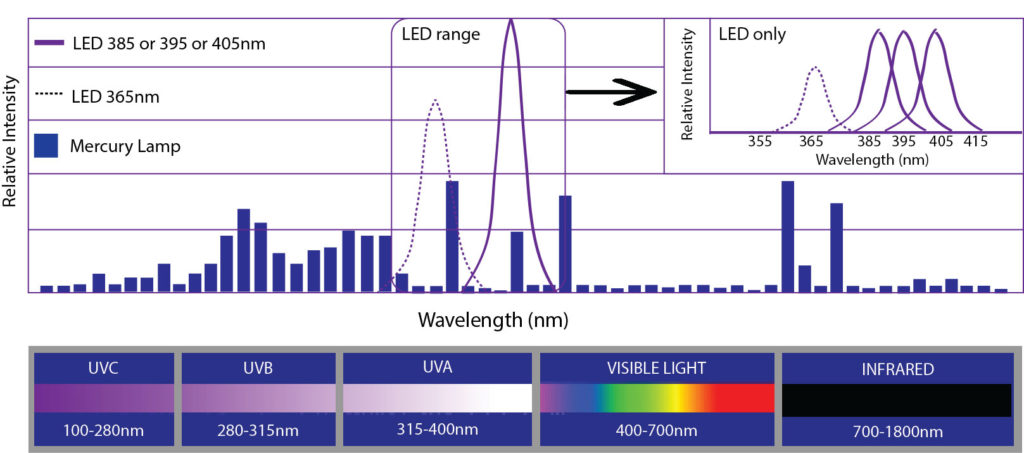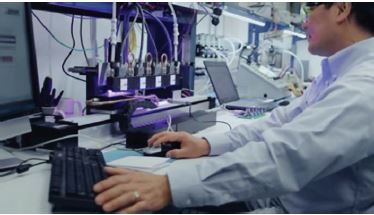UV LED与汞的光谱分布

太阳是全光谱紫外线辐射的来源,通常又分为UV-A、UV-B和UV-C。典型的光源光谱波长范围从紫外光(UV-C:200~280nm;UV-B:280~315nm;UV-A:315~400nm)到可见光(400~760nm)和红外光(760~3000nm)。LED UV灯的光谱输出范围很窄,以特定的波长为中心,±10nm。大多数Phoseon产品使用365nm、385nm、395nm或405nm波长。这种近乎单色的分布(见图)需要新的化学配方,以确保油墨、涂料和粘合剂的正确固化。
大多数标准的UV固化发生在一个狭窄的发射范围内,其余的光谱输出产生不需要的和潜在的有害的UV-C和红外发射。UV LED灯提供了这个狭窄的发射范围。
UV LED固化光源 能有效地将20-40%的输入电力转化为可用的紫外线,而没有有害的UV-C或红外线照射。与汞灯相比,这种效率相当于节省了约80%的电能和热量。
峰值辐照度和能量密度

为了优化固化和建立工艺窗口,应该了解LED灯的两个关键参数。确定这个工艺窗口将导致最耐用和最理想的完成,以及可接受的附着力和表面固化:峰值辐照度和能量密度。
峰值辐照度又称强度,是指单位面积内到达表面的辐射功率。在紫外光固化中,表面是指基材或部件的固化面,一平方厘米是单位面积。辐照度的单位是瓦特或毫瓦特每平方厘米(W/cm²或mW/cm²)。峰值辐照度对渗透和帮助表面固化至关重要。峰值辐照度受工程光源的输出、使用反射器或光学器件将光线集中或控制在更紧密的表面影响区域以及光源与固化表面的距离影响。紫外LED在固化表面的辐照度随着光源与固化表面之间距离的增加而迅速下降。
能量密度又称剂量或辐射能量密度,是指在规定的时间内(停留或照射)到达单位面积表面的能量。平方厘米又是单位面积,辐射能量密度的单位是每平方厘米的焦耳或毫焦耳(J/cm²或mJ/cm²)。能量密度是辐照度随时间的积分。足够的能量密度是完全固化的必要条件。